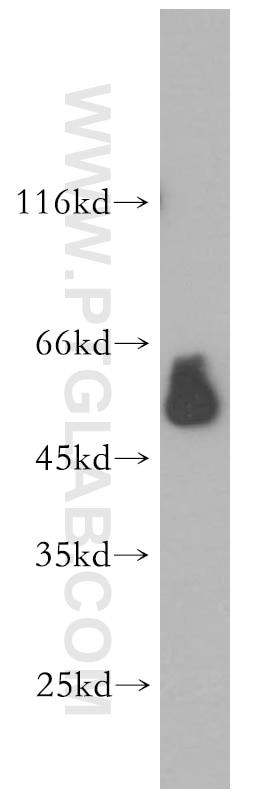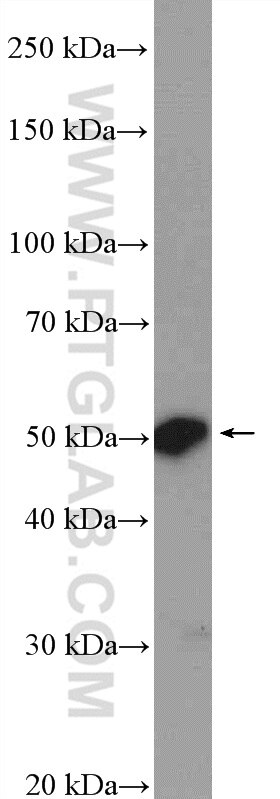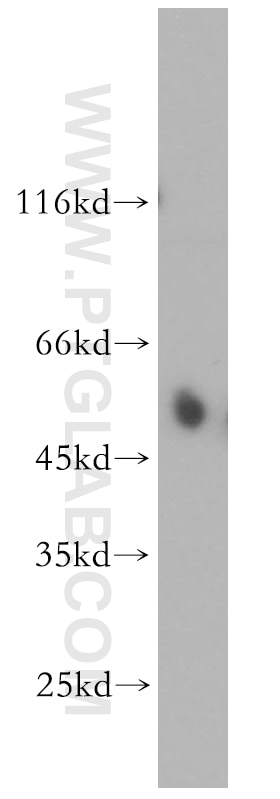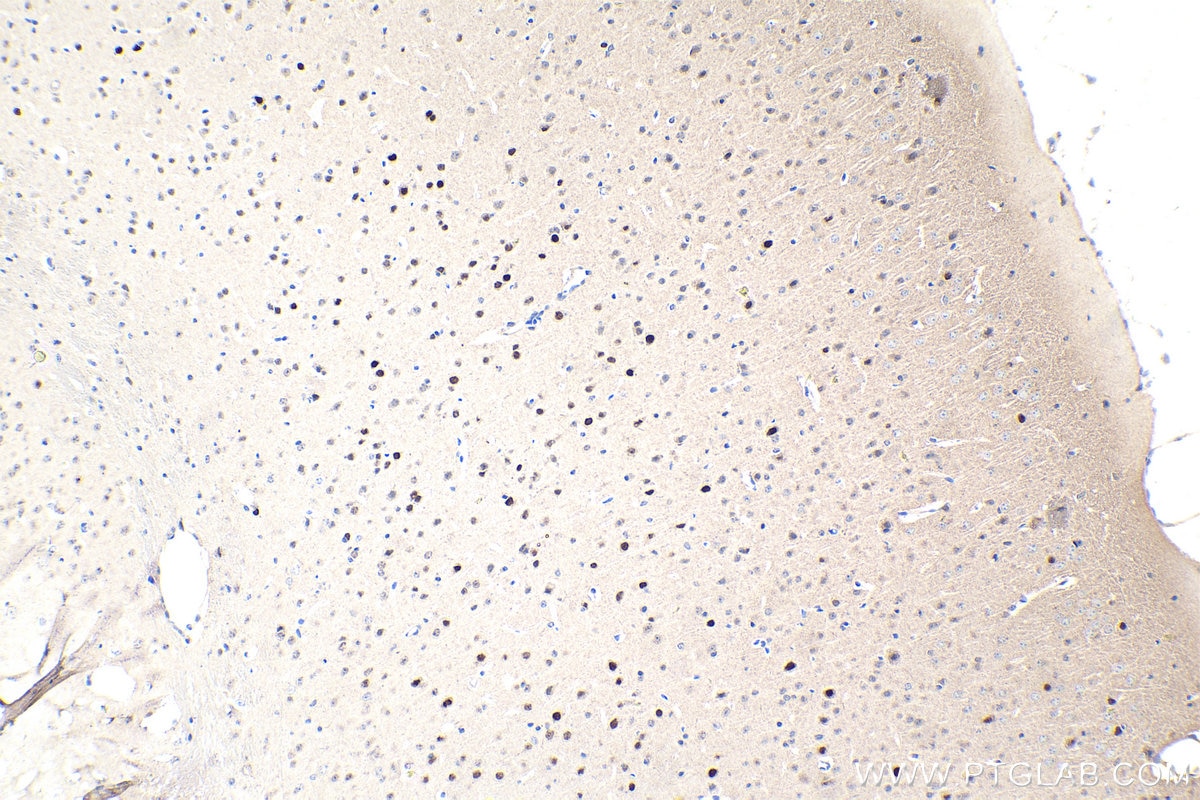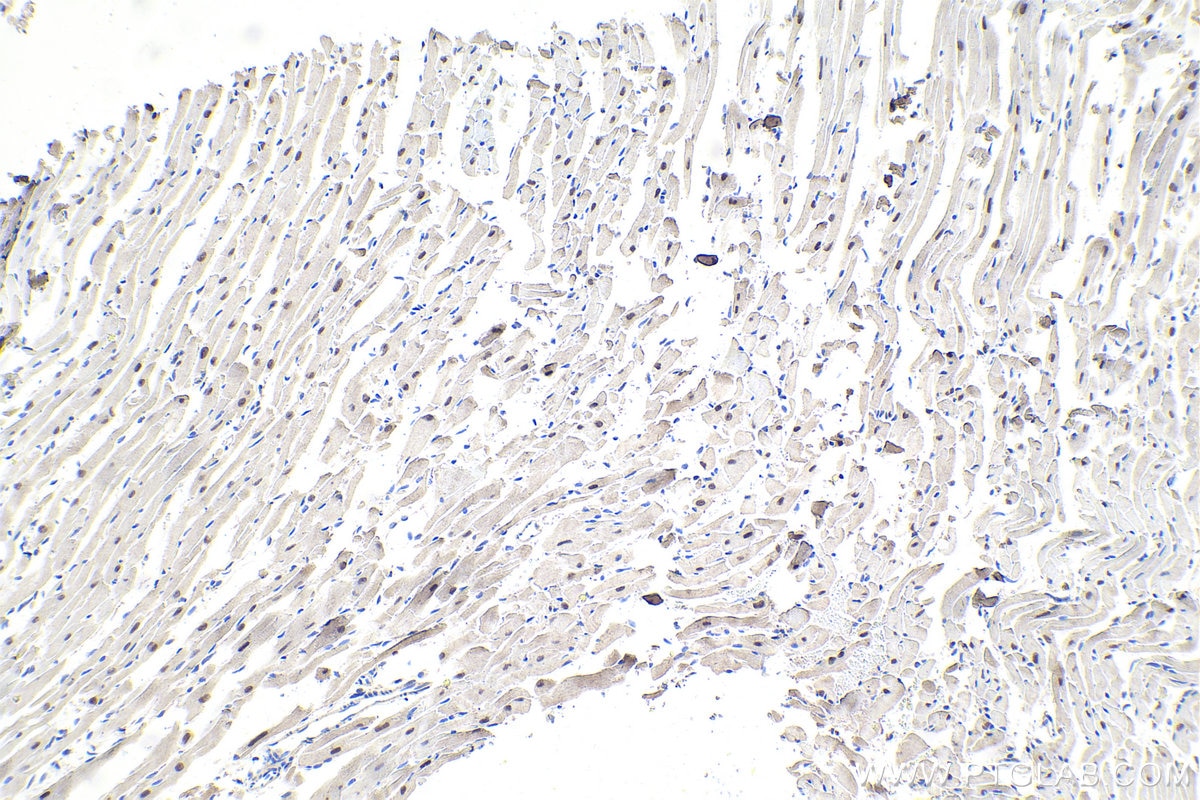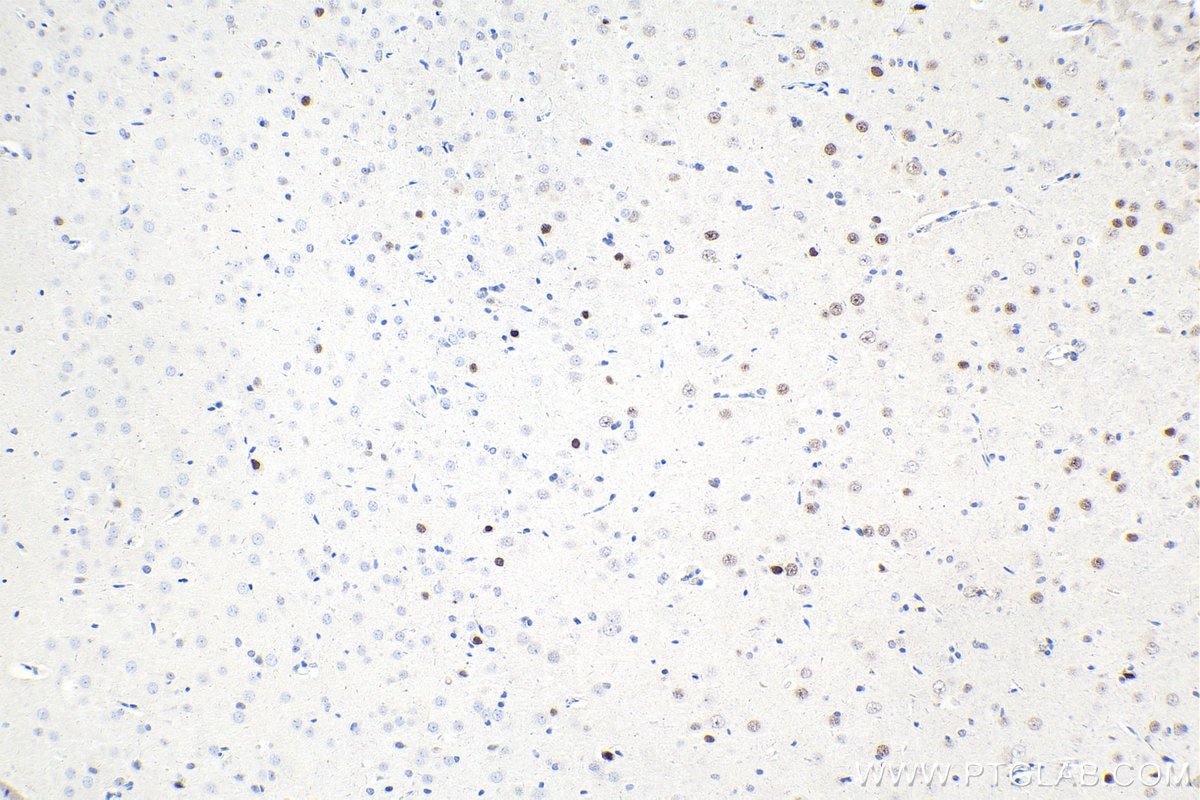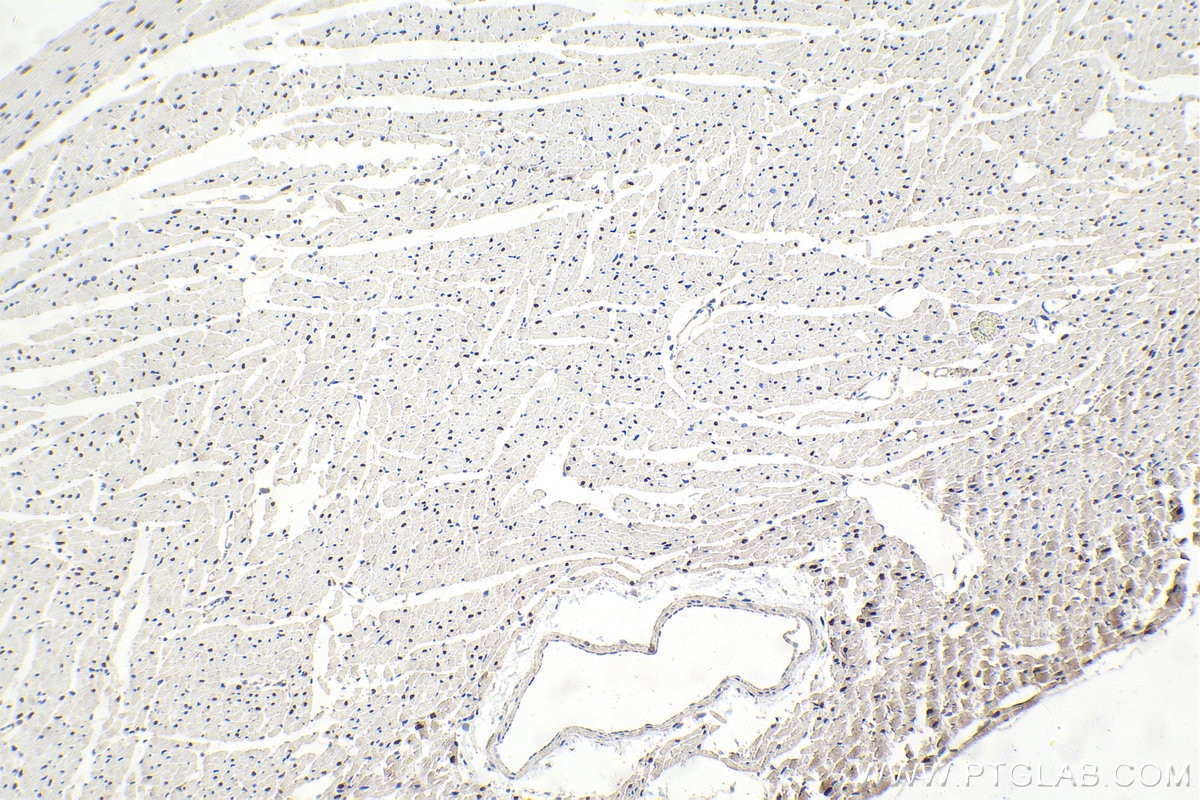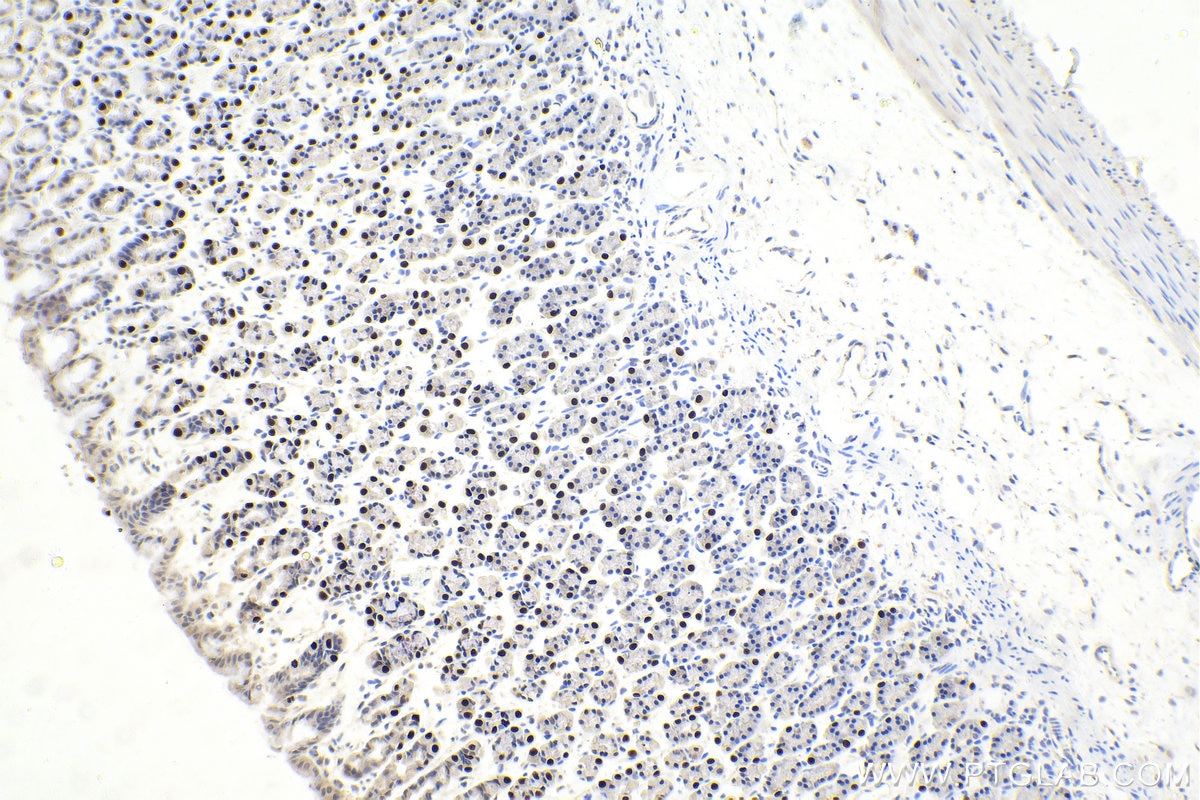- Phare
- Validé par KD/KO
Anticorps Polyclonal de lapin anti-ESRRG
ESRRG Polyclonal Antibody for WB, IHC, ELISA
Hôte / Isotype
Lapin / IgG
Réactivité testée
Humain, rat, souris
Applications
WB, IHC, IF, ELISA
Conjugaison
Non conjugué
N° de cat : 14017-1-AP
Synonymes
Galerie de données de validation
Applications testées
| Résultats positifs en WB | tissu splénique humain, tissu rénal humain |
| Résultats positifs en IHC | tissu d'estomac de rat, tissu cardiaque de rat, tissu cardiaque de souris, tissu cérébral de rat, tissu cérébral de souris il est suggéré de démasquer l'antigène avec un tampon de TE buffer pH 9.0; (*) À défaut, 'le démasquage de l'antigène peut être 'effectué avec un tampon citrate pH 6,0. |
Dilution recommandée
| Application | Dilution |
|---|---|
| Western Blot (WB) | WB : 1:1000-1:4000 |
| Immunohistochimie (IHC) | IHC : 1:2000-1:8000 |
| It is recommended that this reagent should be titrated in each testing system to obtain optimal results. | |
| Sample-dependent, check data in validation data gallery | |
Applications publiées
| KD/KO | See 1 publications below |
| WB | See 5 publications below |
| IHC | See 1 publications below |
| IF | See 1 publications below |
Informations sur le produit
14017-1-AP cible ESRRG dans les applications de WB, IHC, IF, ELISA et montre une réactivité avec des échantillons Humain, rat, souris
| Réactivité | Humain, rat, souris |
| Réactivité citée | rat, Humain, souris |
| Hôte / Isotype | Lapin / IgG |
| Clonalité | Polyclonal |
| Type | Anticorps |
| Immunogène | ESRRG Protéine recombinante Ag5127 |
| Nom complet | estrogen-related receptor gamma |
| Masse moléculaire calculée | 51 kDa |
| Poids moléculaire observé | 51 kDa |
| Numéro d’acquisition GenBank | BC064700 |
| Symbole du gène | ESRRG |
| Identification du gène (NCBI) | 2104 |
| Conjugaison | Non conjugué |
| Forme | Liquide |
| Méthode de purification | Purification par affinité contre l'antigène |
| Tampon de stockage | PBS with 0.02% sodium azide and 50% glycerol |
| Conditions de stockage | Stocker à -20°C. Stable pendant un an après l'expédition. L'aliquotage n'est pas nécessaire pour le stockage à -20oC Les 20ul contiennent 0,1% de BSA. |
Informations générales
Estrogen-related receptor gamma (ERR-gamma), also known as NR3B3 (nuclear receptor subfamily 3, group B, member 3), is a member of nuclear hormone receptor family of steroid hormone receptors. As an orphan nuclear receptor, it binds specifically to an estrogen response element and activates reporter genes controlled by estrogen response elements. It behaves as a constitutive activator of transcription. 4-hydroxytamoxifen and diethylstilbestrol may act as inverse agonists and deactivate ESRRG. It also seems to be the target of bisphenol A. This antibody is a rabbit polyclonal antibody raised against residues near the C terminus of human ESRRG.
Protocole
| Product Specific Protocols | |
|---|---|
| WB protocol for ESRRG antibody 14017-1-AP | Download protocol |
| IHC protocol for ESRRG antibody 14017-1-AP | Download protocol |
| Standard Protocols | |
|---|---|
| Click here to view our Standard Protocols |
Publications
| Species | Application | Title |
|---|---|---|
Acta Neuropathol Commun Nucleolar stress in C9orf72 and sporadic ALS spinal motor neurons precedes TDP-43 mislocalization. | ||
J Transl Med ESRRG-PKM2 axis reprograms metabolism to suppress esophageal squamous carcinoma progression and enhance anti-PD-1 therapy efficacy | ||
J Ethnopharmacol Atractylodes macrocephala Rhizoma alleviates blood hyperviscosity induced by high-fat, high-sugar, and high-salt diet via inhibition of gut-liver inflammatory activation and fibrinogen synthesis | ||
Mol Cancer Res Integrative Epigenetic and Gene Expression Analysis of Renal Tumor Progression to Metastasis. | ||
Int J Biochem Cell Biol Estrogen-related receptor (ERR) γ protects against puromycin aminonucleoside-induced podocyte apoptosis by targeting PI3K/Akt signaling.
| ||
